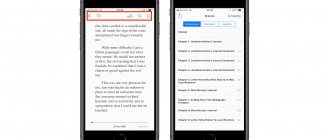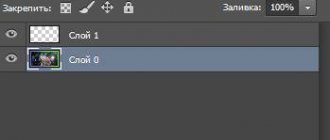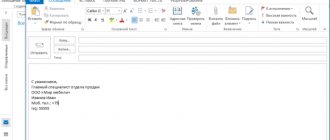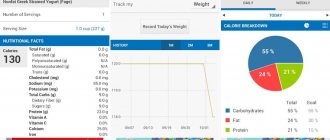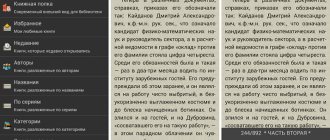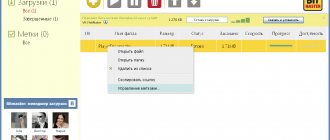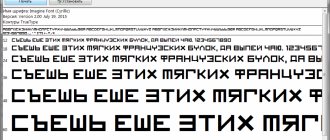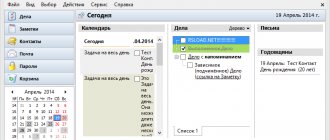A huge hello to the readers and users of GeekTimes who visited our blog!
Do you like to read books?! I am more than sure that there are many among us who like to read in transport, or before bed, or at a resort under the scorching rays of the southern sun. Some people prefer to hold a book with a beautiful hardcover in their hands and finger the thick pages. But more and more readers are switching to reading e-books because of the convenience and ease of use. Some people love fiction, others prefer exclusively professional literature, but each of us faces the same question: what is more convenient and comfortable to read your favorite books on?!
Today, as promised in the first article, we are starting a series of publications about Prestigio products with the history of the creation and development of one of the Prestigio software products - eReader Prestigio. This application was originally developed as a home library, but in a couple of years it has grown into a popular Android e-book reader with support for many convenient functions and all popular formats of both electronic and audio books. Under the cut, we will discuss some of the problems that we had to face when developing the application, as well as ways to solve them, and we will touch on aspects of interaction with official authorities and individuals to obtain legal access to literary works and placement in the library.
But first things first.
Background
In 2012, the idea of launching its own line of tablets matured in the depths of Prestigio, which was subsequently supposed to become the basis for managing the Prestigio smart home eco-system. To start working in this direction - in other words, to try out your strengths - it was proposed to work out a development model for creating a portable and interactive library, or at least a “ bookshelf
”.
In addition, the founder of the company, a Belarusian by nationality, longed to see works by national authors in the Belarusian language, available to everyone anywhere in the world, including works from the school curriculum list. But we will talk about this in a special interview with the founder of Prestigio. For now, we note that for these purposes, an apparatus for automatic digitization of books was purchased at our own expense, and agreements were concluded with publishers and copyright holders. As a result, our users who speak and/or study the Belarusian language have complete and, most importantly, free (!)
access to more than
3000 (!)
works of literature in EPUB format!
In the store you can purchase and read
more than 50,000 books in more than
25 languages
. Naturally, some of them are distributed completely free of charge.
Most books, of course, are in Russian, but other languages are not far behind as the store develops.
So, there is a desire, there are opportunities, and there are practically no competitors: then 3-4 years ago, reading e-books from various devices was just becoming fashionable, to Besides, they mostly read on special devices with an E-ink display. As for applications for ordinary smartphones, there was no special choice and variety of reading programs at that time, in particular for tablets. The market was just about to explode with the release of cheap $100 tablets.
In the world of Android devices at that time, Gingerbread aka Gingerbread (2.3) reigned supreme, and this version was exclusively for smartphones, while tablets had their own Honeycomb. And the version of the great unification Android 4.x, which appeared in 2011, had yet to win over its users.
History of the appearance of different versions of Android (Source)
How the reader was created: a winding path to the top
First steps: outsource development or when everything doesn’t go according to plan
Unfortunately, the big problem turned out to be a lack of experience, both in terms of interface design and programming for Android.
There were only ideas in the air, so in order to turn them into a real product, Prestigio decided to hire a third-party development team that would, as it seemed then, simplify the process of creating an application as much as possible, as well as minimize development costs. And it is quite natural that the choice fell on a team that already had sufficient experience - the FB Reader team. Within six months, a concept design was developed, the main blocks of the application were drawn and written, and the very “ book shelf”
". And by the fall of 2012, eReader Prestigio version 1.0 was born, which was initially available only for Prestigio tablets (as a preinstalled version), because the reader was developed as a built-in library.
In some ways, eReader Prestigio and FB Reader were like two peas in a pod
But there were also characteristic differences in design and functionality: for example, FB Reader does not have a “
book shelf” as such, the file manager has been changed
Unfortunately, by the end of 2012, due to the high cost of development for such a local product, contacts with the FB Reader team were severed, and the code written by that time was requisitioned. The second attempt to outsource the project equally turned out to be a fiasco, although a second version of the application was released with the addition of new functionality and options, but more on that below. Ultimately, we had to look for internal opportunities to continue working on the application.
An expensive lesson:
outsource development, of course, has its advantages (for example, if you want to create an application and forget about it in terms of support and updates), but it is also not without significant disadvantages. Insufficient motivation of the outsource developer himself or a group of developers working for a fixed, often hourly wage, and delays in project delivery. The customer needs to work out the outsourced project down to the smallest detail, because playing “ping pong” can and will probably cost too much.
DRM and Adobe: there’s no way without DRM, but with DRM it’s hard
The next milestone and big step forward was the connection of DRM (Digital Rights Management) books using RMSDK from Adobe in version 2.0 of the application, as well as the creation of a full-fledged store and personal account or, so to speak, “ library card
” for synchronization between devices. By this time, the application development paradigm began to change: a purely local product was being replaced by a version available to everyone through Google Play.
The reader will naturally wonder: why add DRM books and support for DRM formats at all?
The answer is very simple: the main goal of creating this application was to have a portable library available anywhere on the globe, in any language, with the ability to purchase any books if desired. And here a dilemma arises: either pirated versions of books, or full-fledged and legal DRM content. Unfortunately, piracy, to put it mildly, is not encouraged in most countries, especially in the so-called civilized world, which is why there is no way to do without legalizing content. And this is one of the main reasons why we cannot connect the Flibutsa catalog directly through the reader.
In addition, through feedback at some point we began to receive requests from our users from Poland, Germany, the Czech Republic, and other EU countries to add certain favorite and interesting books in their native languages. To our deep regret, the legislative situation in the territory of the former USSR makes it extremely difficult to conclude contracts and promote DRM books in Russian, Ukrainian and Belarusian languages at affordable prices, but in European countries literary works can only be distributed this way. But we will talk about this at a deeper level, as noted above, another time.
And although the code had already implemented such features as the OPDS (Open Publication Distribution System) catalogue, the basis for the store and the personal account, all this needed to be developed, improved and simply maintained in working order. Having become completely disillusioned with outsourcing, I had to assemble my own development team and, in fact, begin to build everything anew on the prepared foundation.
One more problem has been added to the existing ones. Around mid-2014, an update to RMSDK was released with new libraries from Adobe, which had a number of significant drawbacks:
- the library ate up half of the downloaded volume of the application, so for normal operation it had to be cut very much before compiling and adding to the application;
- the library does not work with the text itself, but converts it into picture pages that cannot be fed to a speech synthesizer (text-to-speech);
- The library is native and requires compilation for different versions of the OS and devices exclusively on MAC, which created a number of difficulties.
Working points: slow EPUB
After the next update of the application, which added a new library from Adobe, complaints began to be received from users that books in EPUB format loaded extremely slowly when read.
Debriefing showed that one of the reasons lies in the updated version of RMSDK. So, in the case of reading EPUB using the Adobe DRM system, when you start reading a book, the pages are preliminary counted and prepared for display, which takes a certain time. However, the approach to the concept of a page when zooming and changing text display parameters is different: for Adobe this amount remains the same, but in our reader it is recalculated in accordance with these new parameters, which again takes a lot of time. As a result, we had to use the previous library and optimize the page layout process itself. By the way, the FB Reader team took a different route, offering to download and install add-ons - plugins - to the main version of the program, which inherently makes working
with it difficult.
The Great Unification of Android and FullHD Screens
The next important stage was the redesign of the graphical shell and problems, which brought with it the unification of the tablet and smartphone versions of Android into a single Android 4, as well as the release of devices with a full FullHD display.
The process of redesigning the graphical shell of the application took about six months, at the same time as the transition to the new Android 4 menu was carried out: instead of four lower buttons, only 3 remained, and the upper notification area also changed. Plus, from 2012 to 2014 there was an active introduction of FullHD displays on smartphones, that is, displays with a resolution of 1920 by 1080 pixels. If memory serves, one of the first signs was Butterfly from HTC. It turned out that the software implementation of various effects, for example, the flipping effect, slows down greatly on many devices due to software graphics acceleration, which led to the introduction of hardware acceleration implemented in OpenGL. In fact, the application was born again in version 3.0.
Significant difference: software flipping with the “forced graphics acceleration” setting (left) and implemented in openGL (right) for a FullHD display
Of course, there were some excesses. So some device manufacturers (let's not point fingers) claimed support for OpenGL2, although in fact the chipsets did not have such support, which simply led to blank pages during reading. Whereas other manufacturers incorrectly calculated and indicated in the firmware the screen resolution, which is automatically read when drawing the interface, which also affected the displayed image:
Funny bugs, due to incorrect data included in the firmware by the manufacturer.
Operating issues: user desires - good or bad?!
One day, a very interesting story happened to the development team. A specially organized public opinion poll showed that not many users use reading settings (font size and type, backlighting, etc.), and most of them were in favor of replacing the expanded settings down to a couple of basic buttons. Well, the desire of users is the law: they made and released a new version of the application. Subsequently, it turned out that the vast majority of users decided to ignore this survey, while rewarding the application with angry reviews after implementing the new reading settings. We had to redo it as quickly as possible and divide the settings into two basic groups: those that most users could easily use, and advanced options for those who like to carefully customize the text displayed on the screen:
Now the text settings options are divided into basic ones, which pop up immediately, and additional ones.
A similar situation occurred with the background, the picture that the user sees when reading. The audience was divided into two camps: those who want presets, that is, preset background colors, and those who want to see a full color gamut with fine-tuning color. So far the version with the gamma wheel has won, but we will definitely add some of the most popular presets in future versions.
The moral of this story is this:
any survey shows the opinion of only the active part of the audience, behind which a much more significant mass of people may be hiding. They just want to use their favorite application, and they have a very hard time with radical changes.
New processors from Intel based on x86 architecture: developers' nightmares
The year 2014 was marked by the release of new processors from Intel based on x86 architecture, which very quickly began to capture the market, although “prototypes” of devices had been available since 2012.
Few people thought then that this would require superhuman efforts from developers, because changing the architecture without the appropriate means of porting from platform to platform actually means writing a new application for a new architecture. Intel even held master classes, encouraging people to actively develop for the x86 platform (and even on Habré). However, soon after the successful launch and some shock, the giants Google and Intel agreed and released a special compiler for cross-architecture creation of applications (review on the Intel blog).
Selecting a reading application on Android devices: eReader Prestigio, ZXReader and EBookDroid
Table of contents
- Introduction
- eReader Prestigio
- Acquaintance
- First impression and setup
- Reader
- System Load
- conclusions
- Acquaintance
- First impression and setup
- Reader
- System Load
- conclusions
- Acquaintance
- First impression and setup
- Reader
- System Load
- conclusions
Introduction
This time we will return to the topic of e-books, which was touched upon almost two years ago.
Let me remind you that Cool Reader, FBReader, AlReader, PocketBook, as well as Moon+ Reader and FullReader+ were tested then. Since then, little has changed in these applications, which means there is no point in duplicating already detailed reviews. In this case, there is only one thing left to do - to highlight new and unknown solutions to us in order to broaden our horizons and remember what a real reader for Android should be like.
The first will be eReader Prestigio - a proprietary utility released by the mobile device manufacturer of the same name and with a built-in online store. It is distinguished by its omnivorous formats, TTS support and the ability to listen to books in MP3. A sort of Cool Reader in the Chinese style.
The second participant – ZXReader – is a young project that shows great promise and requires special attention, since this solution is ready to compete with famous “readers”. Well, the review will end with the domestic EBookDroid, designed to simply and easily read the most popular e-book formats, making “manual” notes on the pages of the latter. So let's get started.
The test equipment used was a DEXP Ursus 8EV2 3G tablet (Android 4.4.2, MT8382 processor, 4 x Cortex-A7 1.3 GHz, Mali-400 MP2 video core, 1 GB of RAM, 4,000 mAh battery, 3G module, Wi-Fi 802.11 b/g/n) and smartphone Homtom HT3 Pro (Android 5.1 Lollipop, MT6735P processor, 4 x Cortex-A53 1.0 GHz, 64-bit, Mali-T720 video core, 2 GB RAM, 3,000 mAh battery, 4G module, Wi -Fi 802.11b/g/n).
announcements and advertising
2080 Super Gigabyte Gaming OC for 60 rubles.
Compeo.ru - the right comp store without any tricks
RTX 2060 becomes cheaper before the arrival of 3xxx
Ryzen 4000
series included in computers already in Citylink
The price of MSI RTX 2070 has collapsed after the announcement of RTX 3xxx
Core i9 10 series is half the price of the same 9 series
The price of memory has been halved in Regard - it’s more expensive everywhere
eReader Prestigio
Acquaintance
The proprietary application of the second-tier brand has earned the trust of users on Google Play, which is not surprising, because in addition to the enviable omnivorous e-book formats, it supports MP3, AAC and M4B audio formats.
Not without a smart announcer, as well as our own online content store, where there are both free books and paid ones at a reasonable price. All that remains is to evaluate the performance of the interface, the load on the system and ease of management.
| Rating on Google Play | 4.5 |
| Developer | Prestigio |
| Number of downloads on Google Play | 50 000 |
| Compatibility of the application with other versions of Android OS | 4.0 or later |
| Distribution size | 22 MB |
| Application version | 5.7.7.1 |
| In-app purchases | From 56.00 to 5,500.00 rubles per unit |
Main functions:
- Stylish design, intuitive navigation and convenient “reader” structure;
- File manager;
- eReader Prestigio supports a large number of formats: DJVU, FB2, EPUB, RTF, TXT, HTML, PDF, EPUB3;
- Text to Speech (TTS) in over 25 languages;
- Intelligent search for books on your device;
- Multilingual support;
- Online store of electronic books.
Permissions:
In-app purchases, identification data:
- Search for accounts on the device;
- Adding/removing accounts.
Contacts:
- Search for accounts on the device.
Telephone:
- Receiving information about the phone status.
Photos/multimedia/files:
- Changing/deleting data on a USB drive;
- View data on a USB drive.
Memory:
- Changing/deleting data on a USB drive;
- View data on a USB drive.
Wi-Fi connection information:
- View Wi-Fi connections.
Device ID and call data:
- Receiving information about the phone status.
Other:
- Changing/deleting data from internal media storage;
- Changing the configuration of Google services;
- Unlimited Internet access;
- Creating accounts and setting passwords;
- Using accounts on the device;
- Prevent the device from going into sleep mode;
- View network connections;
- Vibration function control;
- View Google service configuration;
- Sending messages and then saving them;
- Starts when the device is turned on.
First impression and setup
When we first launch eReader Prestigio, we are prompted to log in or skip this step. It’s definitely worth registering, as this procedure opens up a number of specific opportunities, for example, saving bookmarks on the Web or using a branded online store. By the way, you can log in using your Google, Facebook or Microsoft account.
Next, the main screen opens, made in the already hackneyed style - in the form factor of a bookshelf. There are only three tabs - recent, my books and store.
The online store cannot be called “Liters”, but it will be enough for the first time, fortunately there are also free reading materials in the amount of 17,591 works. At the same time, the books are divided into categories, and not dumped into one pile, there are annotations and previews. Interestingly, there is little paid content, and it itself cannot be called unique, but it is always at hand.
The sidebar on the left implies a shopping cart and a euro wallet for purchasing works. Here you can also find your favorites, catalogue, synchronization with cloud services, themes, search for reading material on devices and settings. For convenience, it is possible to create and add your own collection.
As for customizing the interface, yes, eReader Prestigio offers a lot of interesting topics designed to set you up for long and relaxed reading.
In the settings, you can select a directory for storing books, synchronize it only via Wi-Fi (useful if you read from the cloud), and also set a high-quality image only via a wireless network. In general, the developer is concerned about saving our traffic.
In addition, upon startup, the last closed book opens, and an Adobe account is also activated, which is reasonable. Here, manual synchronization is performed and advertising is removed, which I have not noticed yet. This pleasure costs 199 rubles.
In the upper right corner of the screen, you can edit the collection, clear the reading history, and also change the view - covers or a simple list.
In general, at first glance, we have a simple but convenient “reader” that, first of all, offers to read publicly available books, and not edit and comment on scientific work. Now let's see how it all works.
